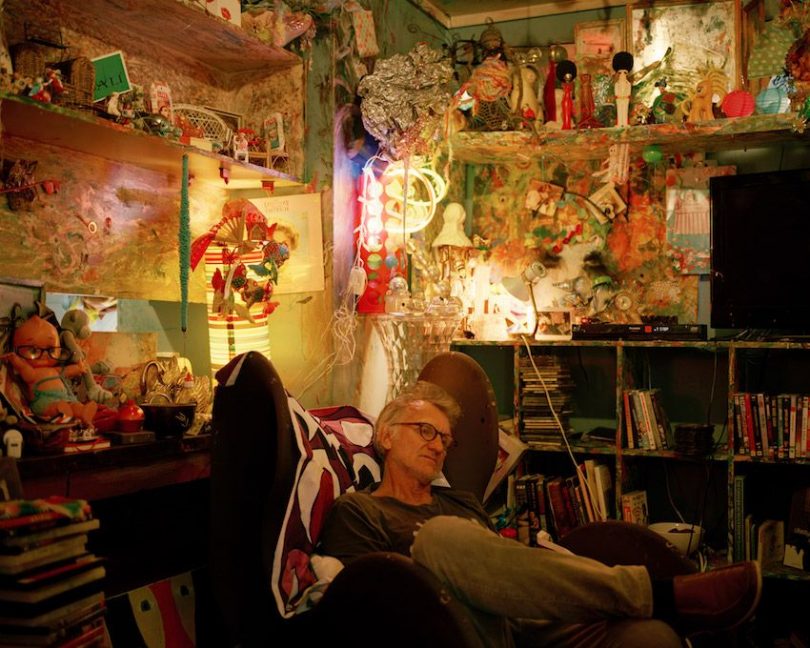
Dean Qiulin Li, Richie, 2019. Exhibited, ‘A Young Black Kangaroo’, PhotoAccess online. Photo: Dean Qiulin Li and PhotoAccess.
PhotoAccess is running two distinctive online exhibitions to help keep photography active during Canberra’s ongoing COVID-19 lockdown.
Manuka-based photographic learning and display centre PhotoAccess is showcasing two very different online exhibitions that aim to inspire enthusiasts of the craft.
In its current exhibition, ‘A Young Black Kangaroo’, art photographer Dean Qiulin Li records some of the stories from Sydney’s Woolloomooloo neighbourhood public housing community. Through portraits of residents and their homes, created across two years from 2018, the artist aims to challenge stereotypical misconceptions about public housing tenants.
Coming soon, ‘The Pandy Shuffle’ is a series that features 11 artists who have completed a 10-month mentored program called ‘Concept to Exhibition’. Director Dr Kirsten Wehner says some of these artists will also talk online about their work.
“‘The Pandy Shuffle’ refers to the pandemic, the pandemonium, and the Pandora’s box of ideas that the workshop brought to life,” says exhibiting artist Claire Manning. “My experience helped me walk on days when I wasn’t feeling in the mood. Taking my camera helped me get out to see, hear, smell, taste and feel my neighbourhood.”
‘The Pandy Shuffle’ opens on 23 September as an online event.
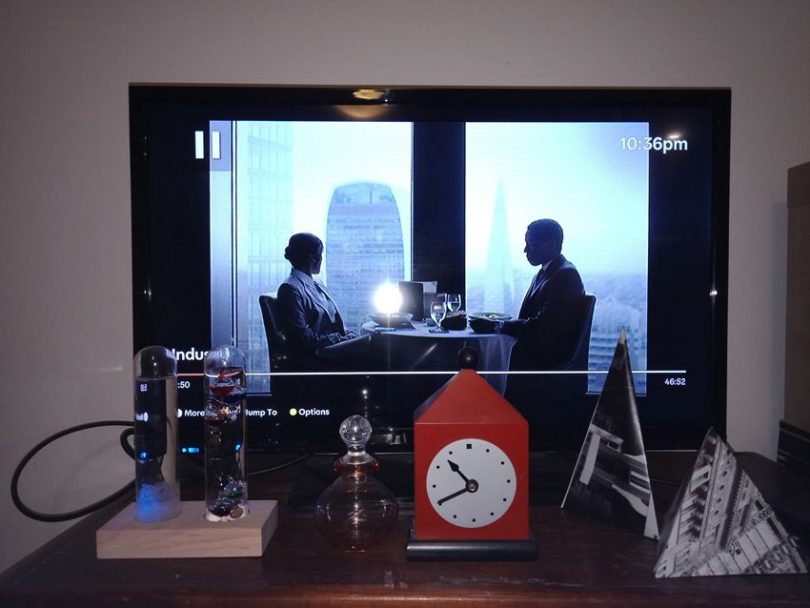
Claire Manning, Time is Precious Still Life, 2021. Exhibited, ‘The Pandy Shuffle’, PhotoAccess. Photo: Claire Manning and PhotoAccess.
PhotoAccess was created in 1984 by a group of enthusiastic photographers as a regional centre for visual arts, aiming to be open to the community. It started near the Australian National University, but moved to Manuka Arts Centre in 2002.
It aims to show around 25 exhibitions a year in its main space, the Huw Davies Gallery – named after one of the founding members – as well as in various venues around Canberra. Works on display usually include fine art images, film-based work, videos and interactive multimedia.
Dr Wehner says the organisation supports a wide range of contemporary photography and is keen to back photographers from beginners through to very accomplished shooters. PhotoAccess runs workshops, community exhibitions, and teaches digital, video, and darkroom techniques.
She notes that film is making “a huge comeback”.
Recent work has included an eight-week engagement with Indigenous photographer Merv Bishop, 76, who is a news and documentary photographer who joined The Sydney Morning Herald newspaper in the early 1960s as the first Indigenous Australian to work on a metropolitan daily paper.
In 1971, four years after completing his cadetship, Merv was named Australian Press Photographer of the Year. He has continued to work as a photographer and lecturer, and was on hand for one PhotoAccess session with trainees.
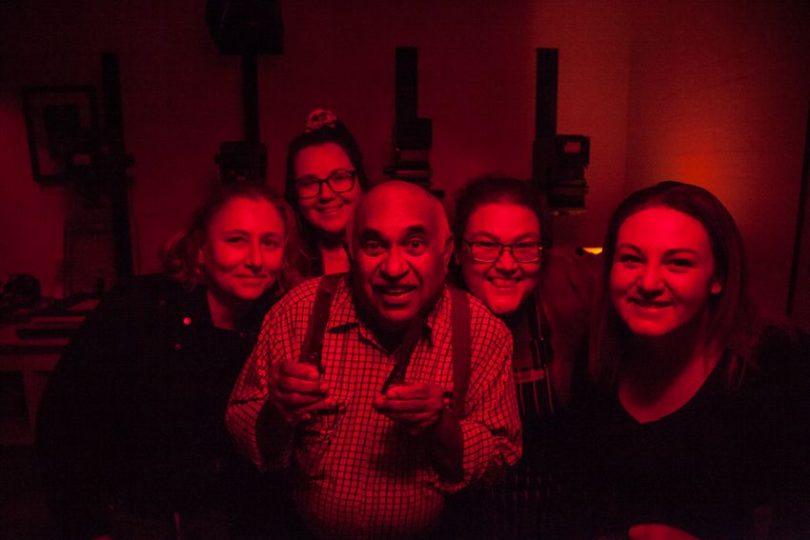
Intimate Icons, Celebrating Merv Bishop workshop, PhotoAccess darkroom, 2021. Photo: Wouter Van de Voorde and PhotoAccess.
Dr Wehner says in the darkroom-based Merv Bishop program, participants explored his collection of work and then produced their own images reflecting their learning, with a photobook created at the end.
Although COVID-19 lockdown has temporarily closed the PhotoAccess workshops and physical galleries, Dr Wehner says the online galleries have remained active. She notes there have been more than 95,000 visits to the PhotoAccess website since COVID-19 first hit in 2020.
“Hugely more than the physical gallery,” says Dr Wehner.
The gallery also runs – and archives – its ‘Photo Stories’ series of online conversations with exhibitors and interesting contemporary photographers, which are livestreamed through the organisation’s Facebook page and are available permanently through the PhotoAccess online gallery.
In the most recent ‘Photo Stories’ post, PhotoAccess studio officer Rory Gillen looked at how digital technology is changing the face of photographic practice. He spoke with Chris Bowes, a multidisciplinary artist working across photography, video and installation who staged the recent exhibition, ‘Split’.
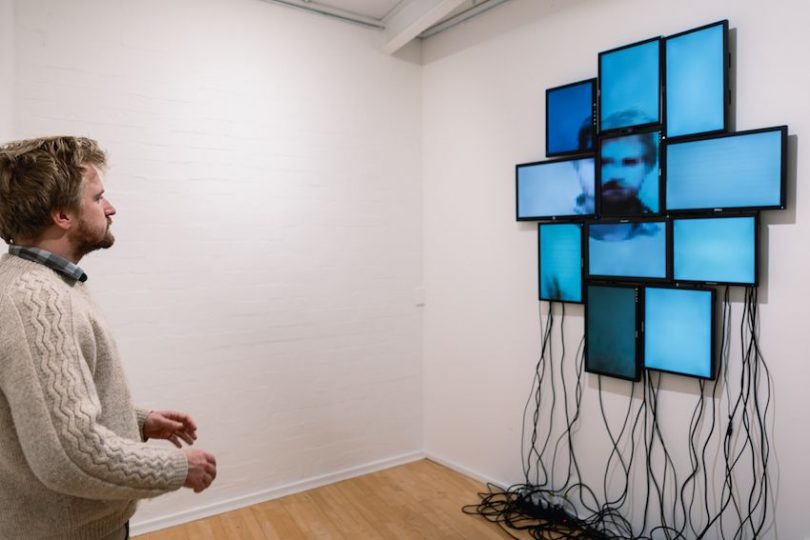
Chris Bowes, Split, 2021. Installation view. Exhibited: ‘Split’, PhotoAccess. Photo: Gemma Fischer Photography and PhotoAccess.
As an example of PhotoAccess community involvement, it also ran an eight-week workshop with Women with Disabilities ACT, where each participant made a short film on the theme of ‘Sue’s Legacy’, about disability advocate Sue Salthouse, who died in 2020.
“Each film was about her impact on their lives,” says Dr Wehner.
The final film collection is available on the PhotoAccess website.
“Our lives are inundated with images so we need to think about how important that imagery is, and how it shapes our world,” says Dr Wehner.
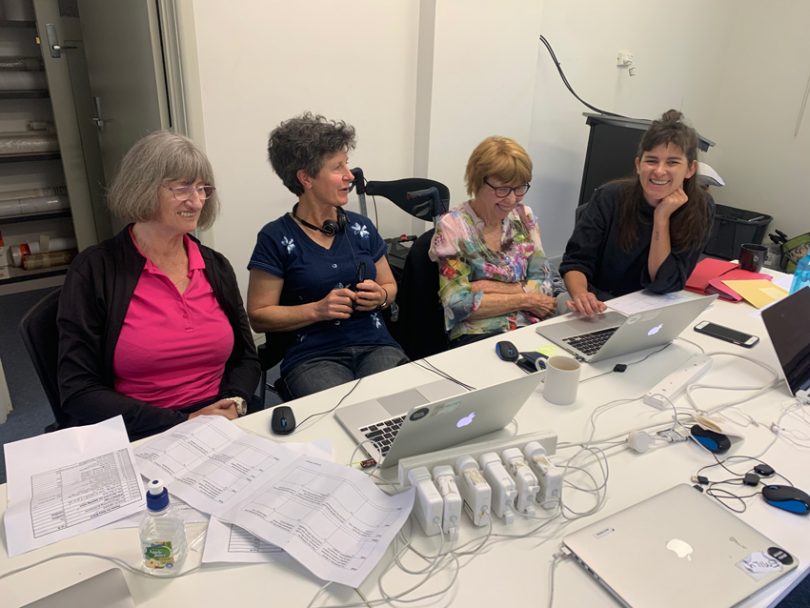
‘Sue’s Legacy’ digital storytelling workshop at PhotoAccess. Photo: Kate Matthews and PhotoAccess.
PhotoAccess membership is $55 a year, or $35 concessions for students, low-income workers and seniors.
For more information, visit PhotoAccess.
Robert Keeley has been a writer and photographer for more than four decades. He has written about sport, travel and photography, and photographed many major events and festivals, and a range of sports.
He was editor of Australian Photography magazine for 16 years, and produced documentary images on the inaugural seasons for AFLW teams Collingwood and St Kilda.
He also spent a year driving through the US while writing about and photographing his adventures. His stories and photography can be viewed here.












